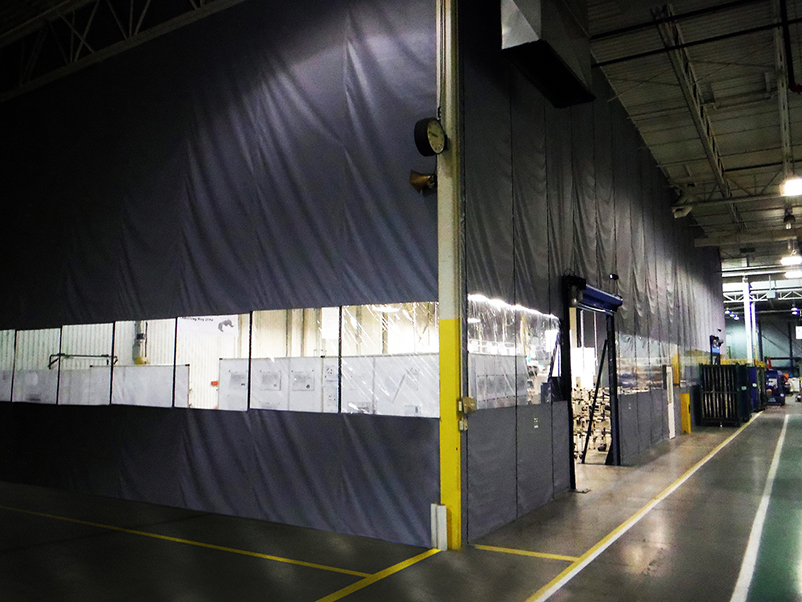- Home
- News
- How Curtain Walls Work for Fume Control Applications
How Curtain Walls Work for Fume Control Applications
If you need fume control, I'm sure you know it. After all, fume control is important because it can be a health hazard to your employees as well as a safety risk due to its explosive and flammable nature. In this blog post, we will talk about the different methods you can use to control it and look at how industrial curtain walls can play an important part in the process.

Methods of fume control
There are relatively few methods used to keep process fume generation under control, but all rely on moving a volume of air containing the fumes or vapors and these include:
- Local exhaust high velocity airflow stream captures fumes/vapors at the point they are generated and carries them away
- Fume separation/removal necessitates the incorporation of chemical scrubbers or activated carbon filters in the exhaust stream
- Vapor recovery and reintroduction typically a condensing system to convert vapor to liquid and return it to the process stream
Because of the volatile and diffusive nature of fumes and vapors, local exhaust with fume hoods represent the most common approach in accomplishing this.
How curtain walls help with fume control
The smaller the space can be made, the smaller and more efficient the exhaust equipment can be. Curtain walls are a very effective way to accomplish this. Reduced volume of the space to be exhausted means lower volume air flow needed, and better fume capture due to less turbulent airflow.
Curtain walls can be single layer fabric or multi-layer insulated. They can easily be fitted with clear vision panels for visual communication between spaces. They are by nature flexible yet very durable, and can withstand contact from machinery or product, and simply bend without breaking, in contrast to a hard permanent wall. They are available as stationary as well as sliding (suspended from roller track), and can be fitted with strip curtains, personnel doors, or high speed industrial doors for full range of access to the space.
Curtain walls are easily installed, can be simply trimmed around conduit, piping, ductwork, etc., and can be anchored to the floor to withstand pressure differential across them. They are also relatively easy to re-configure, if a space needs to be enlarged or reduced, or the shape of the space footprint needs to change. Node-construction is required. Depending on the application, a curtain wall can be suspended from the room ceiling, or they can be supplied with a stand-alone framework to hang from.
A final word of caution
Applications involving volatile, flammable liquids and their vapors present a special hazard. Care must be taken to eliminate potential sources of ignition within any fume control system in these applications. Curtain walls, whether sliding or stationary, should be of a design to prevent static electricity build-up and electrostatic discharge. Track, hangers, trolleys, and curtains need adequate grounding and continuity. Electro-mechanical components of any volatile fume control system must be designed and constructed as explosion proof (explosion proof motors/blowers, sealed conduit, explosion proof junction and control boxes, etc.).
Back to News